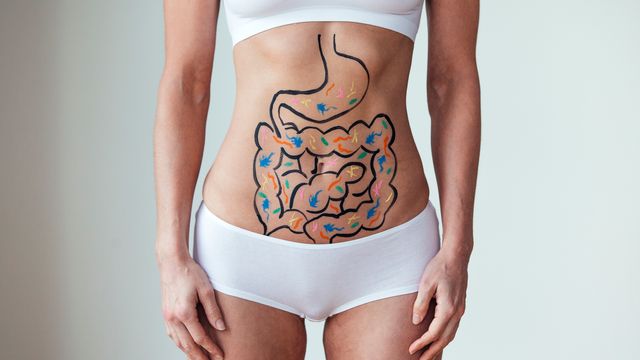Background
Obstructive sleep apnea (OSA), characterized by recurrent upper airway collapse during sleep, leads to chronic intermittent hypoxia (CIH), sleep fragmentation, and systemic pathophysiological changes.1–3 Globally affecting nearly 1 billion people,4 OSA poses a growing public health challenge.5
In recent years, the bidirectional link between OSA and endocrine/metabolic disorders has gained significant attention,6 particularly the nuanced relationship between OSA and thyroid function.7 Thyroid hormones, regulated by the hypothalamic-pituitary-thyroid (HPT) axis, play critical roles in metabolism and cardiovascular function.8–11 Notably, the evidence regarding the association between OSA and thyroid function remains inconsistent. Some studies suggest a subtle connection, such as hypothyroidism exacerbating OSA through airway narrowing7 and OSA-induced oxidative stress impairing thyroid hormone synthesis,12–15 other research, however, indicates no significant associations.16 Our previous study revealed that the progression of OSA may promote increased levels of TH, especially FT3, in non-elderly individuals.17 Adding to this inconsistency, several studies have reported an association between hypothyroidism and OSA severity.18 Together, these divergent findings highlight the need to clarify the contentious relationship between OSA and thyroid function, including its specific mechanisms and bidirectional interactions.
The sleep apnea-specific hypoxic burden (SASHB) and sleep breathing impairment index (SBII) are crucial early indicators for assessing hypoxia in OSA, comprehensively capturing respiratory event frequency, depth, and hypoxia duration.19,20 They can reflect the physiological impact of CIH more accurately than the traditional AHI.21 This focus on oxygen saturation dynamics is particularly relevant for studying thyroid function, as thyroid hormone synthesis and release are highly sensitive to hypoxic stress. By integrating hypoxia intensity and duration, SASHB and SBII offer a more precise tool for dissecting how CIH modulates thyroid hormone levels. Notably, SASHB has already been linked to glucose and lipid metabolism abnormalities22 and cardiovascular risks,23,24 underscoring its utility in capturing hypoxia-related endocrine and metabolic dysfunction. However, no relevant studies have been conducted on the relationships among the SASHB, the SBII, and thyroid function.
Sleep consists of rapid eye movement (REM) and non-rapid eye movement (NREM) stages,25 with distinct physiological profiles influencing respiratory function. REM sleep, characterized by heightened brain activity and muscle atonia,25–27 contrasts with NREM sleep, where physiological functions like heart rate and respiration slow, promoting recovery.25,26 Patients with OSA exhibit more severe airway collapse during REM sleep, likely due to stage-specific neuromuscular regulation.28 Therefore, it is crucial to consider the impact of different sleep stages on physiological functions when studying the relationship between OSA and thyroid function.
Therefore, this study aimed to explore the thyroid function changes in patients with OSA and analyze the intrinsic connections between SASHB, SBII, and thyroid function indicators (such as thyroid hormones and antibodies). Additionally, this study focused on the associations between the SASHB and SBII during different sleep stages and thyroid function, which have never been explored previously. This research is of great theoretical and practical importance for comprehensively understanding the mechanisms by which OSA affects thyroid function, optimizing clinical diagnostic strategies, and developing targeted therapeutic interventions.
Subjects and Methods
Study Design and Participants
This retrospective study included 1681 individuals with suspected OSA who visited the Department of Otorhinolaryngology at Xi’an Jiaotong University Second Affiliated Hospital from August 2017 to March 2024. Participants were included if they (1) were ≥18 years of age; (2) had undergone overnight polysomnography (PSG) and were diagnosed with OSA; and (3) had complete TH and antibody test results. The exclusion criteria were as follows: (1) history of OSA treatment; (2) severe systemic diseases, such as heart, liver, lung, and kidney failure; (3) other non-OSA sleep disorders; (4) severe mental illnesses or malignant tumors; (5) use of sedatives or medications that may interfere with thyroid function; (6) missing clinical PSG data. After stringent screening, 452 participants with complete data were included in this study. The entire recruitment process is illustrated in Figure 1.
|
Figure 1 Summary of patient inclusion and exclusion criteria.
|
This study strictly adhered to the tenets of the Declaration of Helsinki and was approved by the Ethics Committee of Xi’an Jiaotong University Second Affiliated Hospital (Approval No. 2022–1417), with all participants providing informed consent.
Data Elements
A total of 35 relevant clinical parameters were collected in this study, including the following candidate variables: (1) demographic characteristics, including sex and age; (2) anthropometric measures, including body mass index (BMI), neck circumference (NC) and waist circumference (WC), (3) comorbidities, including history of diabetes, coronary heart disease (CHD) and hypertension; (4) lifestyle habits, including smoking and alcohol use; (5) OSA-related history and indicators, including total sleep time (TST) recorded during the overnight PSG study, Epworth Sleepiness Scale (ESS),29 mean apnea duration, maximum apnea duration, apnea–hypopnea index (AHI), lowest nocturnal peripheral oxygen saturation (Lowest SpO2), time spent with peripheral oxygen saturation <90% (T90), percentage of time spent with peripheral oxygen saturation <90% (CT90), average heart rate during sleep, lowest heart rate during sleep, highest heart rate during sleep, SASHB, SASHB during NREM sleep (NREM-SASHB), SASHB during REM sleep (REM-SASHB); SBII, SBII during NREM sleep (NREM-SBII), and SBII during REM sleep (REM-SBII); (6) thyroid function-related indicators, including serum free triiodothyronine (FT3, pmol/L), serum free thyroxine (FT4, pmol/L), serum total triiodothyronine (TT3, nmol/L), serum total thyroxine (TT4, nmol/L), serum thyroid stimulating hormone (TSH, mIU/L), thyroid peroxidase antibodies (Anti-TPO, IU/mL), thyroid globulin antibodies (Anti-TG, IU/mL), and reverse triiodothyronine (RT3, ng/dL). All fasting venous blood samples were collected between 7:00 and 8:00 AM on the morning immediately following an overnight PSG study, under strict quality control protocols, with thyroid function indicators analyzed using standardized laboratory procedures.
Sleep Evaluation
To obtain accurate and objective sleep parameters, all enrolled patients underwent overnight PSG monitoring at the Sleep Center of the Department of Otorhinolaryngology-Head and Neck Surgery at the Second Affiliated Hospital of Xi’an Jiaotong University. All the records were evaluated by certified clinical PSG experts, who comprehensively analyzed various parameters, including electroencephalography, electrooculography, electromyography, electrocardiography, nasal and oral airflow recordings, oxygen saturation levels, chest movements, and muscle activity.
The Epworth Sleepiness Scale (ESS) used in this study has been authorized by the copyright holder.
Calculation and Definition
The AHI is defined as the number of apnea and hypopnea events per hour during sleep. In addition, hypopnea is defined as an abnormal respiratory event lasting at least 10s with at least a 30% reduction in thoracoabdominal movement or airflow as compared with baseline and with at least a 4% oxygen desaturation.30 The SASHB is the total area under the baseline SpO2 curve corresponding to respiratory events per hour during sleep. REM-SASHB and NREM-SASHB refer to the SASHB during REM and NREM sleep, respectively. The SBII is defined as the sum of the duration of breathing events and the corresponding desaturation area per hour during sleep. Accordingly, REM-SBII and NREM-SBII are the SBII during REM and NREM sleep, respectively. In this study, the calculations for SASHB and SBII were based on laboratory test data, including nasal airflow and blood oxygen saturation trend graphs. Using the algorithms developed by Ali Azarbarzin19 and Wenhao Cao,20 we created calculation codes for SASHB and SBII using Python software (version 3.7), enabling efficient batch processing of the raw data. In this study, when the severity of OSA was evaluated by the AHI, patients were categorized according to the number of events per hour: mild OSA was defined as an AHI of 5 to less than 15, moderate OSA was defined as an AHI of 15 to less than 30, and severe OSA was defined as an AHI of 30 or higher. In addition, when the severity of OSA was assessed by the SASHB and SBII, patients were grouped according to quartiles.
Statistical Analysis
The statistical analyses were conducted using R software (version 4.3.2) and SPSS 26.0 (IBM Corporation, Armonk, NY, USA). If the data were normally distributed, the continuous variables were expressed as the means ± standard deviations; if the data were nonnormally distributed, they were expressed as the medians and interquartile ranges. Categorical variables are presented as counts (n) and percentages (%). First, OSA severity was assessed according to the AHI, SASHB, and SBII, and descriptive statistics were calculated. The Kruskal‒Wallis H-test was used for continuous variables, and the chi-square test was employed for categorical variables to examine intergroup differences in descriptive statistics. Additionally, Spearman correlation analysis was performed to assess the associations between thyroid function parameters and sleep parameters, with Benjamini–Hochberg false discovery rate (FDR) correction applied to account for multiple testing. Furthermore, multiple linear regression analysis was performed to evaluate the independent relationships between sleep parameters and thyroid hormone levels, adjusting for potential confounding factors. Sex-stratified analyses were also performed, with separate multiple linear regression models constructed for male and female subgroups to explore sex-specific associations. Moreover, collinearity diagnostics were conducted before statistical analysis to eliminate potential multicollinearity among the variables. All the statistical tests were two-tailed, with the significance level set at p < 0.05.
Results
Baseline and Sleep Parameter Characteristics
A total of 452 patients with OSA, 395 males and 57 females, were included in this study. Significant baseline differences were observed across AHI severity groups (all p < 0.05, Table 1). The male proportion increased with AHI severity, while BMI, NC, and WC showed an upward trend. Hypertension history, smoking, and alcohol use were more prevalent in the severe OSA group (23.51%, 70.82%, and 81.87%, respectively). Sleep parameters, including ESS, hypoxia duration (T90, CT90), and mean heart rate, worsened with increasing AHI, whereas Lowest SpO2 decreased progressively.
 |
Table 1 Demographic Characteristics and Sleep Parameters of Patients According to the AHI
|
Thyroid Function Indicators
The relationship between OSA and thyroid function was explored in depth. When OSA severity was evaluated by the AHI, the results indicated significant differences in FT3, FT4, and TT3 levels among the mild, moderate, and severe OSA groups (all p < 0.05). Specifically, Dunn’s multiple comparison tests revealed significant differences in FT3 between the mild and moderate OSA groups (p < 0.01) and between the mild and severe OSA groups (p < 0.001); FT4 also showed significant differences between the mild and moderate OSA groups (p < 0.01) and between the mild and severe OSA groups (p < 0.01). TT3 differed only between the mild and severe OSA groups (p < 0.05). However, there were no significant differences in TT4, TSH, Anti-TPO, Anti-TG, or RT3 levels (all p > 0.05) (Figure 2 and Table 2).
 |
Table 2 Analysis of Thyroid Indicators According to AHI Severity
|
 |
Figure 2 Mean values of FT3, FT4, and TT3 at the AHI level. (a) FT3; (b) FT4; (c) TT3. *P < 0.05, **P < 0.01, ****P < 0.0001.
Abbreviations: FT3, serum free triiodothyronine; FT4, serum free thyroxine; TT3, serum total triiodothyronine; AHI, apnea–hypopnea index.
|
In addition to being grouped by the AHI, patients were also classified according to SASHB (≤21.38, 21.38–74.47, 74.47–221.21, and >221.21) and SBII (≤9.53, 9.53–36.05, 36.05–110.34, and >110.34) quartiles. In the analysis of intergroup differences, thyroid function indicators exhibited complex and diverse trends. There were statistically significant differences in the FT3 levels in the SASHB and SBII quartiles (all p < 0.01). With the gradual increase in the SASHB and SBII quartiles, the FT3 levels tended to increase. Although FT4 exhibited a meaningful intergroup difference when grouped by SBII severity (p < 0.05), post hoc multiple comparisons revealed no significant differences in the FT4 levels across groups. Additionally, as the SBII increased, the TSH tended to decrease initially and then increase (Figures 3 and 4, Table 3 and Table 4).
 |
Table 3 Analysis of Thyroid Indicators According to SASHB Severity
|
 |
Table 4 Analysis of Thyroid Indicators According to SBII Severity
|
 |
Figure 3 Mean values of FT3 and FT4 at the SASHB level. (a) FT3; (b) FT4. *P < 0.05, **P < 0.01.
Abbreviations: FT3, serum free triiodothyronine; FT4, serum free thyroxine; SASHB, sleep apnea-specific hypoxic burden.
|
 |
Figure 4 Mean values of FT3, FT4, and TSH at the SBII level. (a) FT3; (b) FT4; (c) TSH. *P < 0.05, **P < 0.01.
Abbreviations: FT3, serum free triiodothyronine; FT4, serum free thyroxine; TSH, serum thyroid stimulating hormone; SBII, sleep breathing impairment index.
|
To further explore correlations among the SASHB, the SBII, and thyroid function during the NREM and REM periods, patients were regrouped according to REM-SASHB, NREM-SASHB, REM-SBII, and NREM-SBII severity. Focusing first on NREM sleep, significant differences in FT3, FT4, and TSH levels were found among the groups according to NREM-SASHB and NREM-SBII severity (all p < 0.05), with TSH levels initially decreasing but then increasing. The specific results of the multiple comparison tests are presented in Figure S1. In REM sleep, only FT3 levels differed between the REM-SASHB and REM-SBII groups (all p < 0.05) (Tables S1–S4; Figures S1 and S2).
Exploration of the Correlation of Variables and Regression Analysis
Based on the correlation analysis results after FDR correction, we initially explored the correlations between PSG and thyroid function variables, demonstrating the necessity of regression analysis. FT3 was significantly positively correlated with AHI, mean apnea duration, T90, CT90, REM-SASHB, NREM-SASHB, SASHB, REM-SBII, NREM-SBII and SBII (all q < 0.05), and negatively correlated with lowest SpO2 (q < 0.05). FT4 was significantly positively correlated with TST and maximum heart rate (both q < 0.05). TT3 was significantly positively correlated with AHI, mean heart rate and maximum heart rate (all q < 0.05). Anti-TPO was significantly positively correlated with TST and T90, and negatively correlated with lowest SpO2 (all q < 0.05). The negative correlation between TSH and NREM-SBII did not remain significant after correction (q > 0.05), while TT4, Anti-TG and RT3 showed no significant correlations (all q > 0.05). These results further demonstrate the necessity of regression analysis to explore the independent associations (Tables S5 and S6, Figure 5).
 |
Figure 5 Heatmap of the correlations between sleep parameters and thyroid parameters.
Abbreviations: TST, total sleep time; AHI, apnea–hypopnea index; Lowest SpO2, lowest oxygen saturation at night; T90, sleep time spent with oxygen saturation below 90%; CT90, the percentage of sleep time with oxygen saturation below 90%; REM-SASHB, sleep apnea-specific hypoxic burden during rapid eye movement sleep; NREM-SASHB, sleep apnea-specific hypoxic burden during non-rapid eye movement sleep; SASHB, sleep apnea-specific hypoxic burden; REM-SBII, sleep breathing impairment index during rapid eye movement sleep; NREM-SBII, sleep breathing impairment index during non-rapid eye movement sleep; SBII, sleep breathing impairment index; FT3, serum free triiodothyronine; FT4, serum free thyroxine; TT3, serum total triiodothyronine; TT4, secretes total thyroxine; TSH, serum thyroid stimulating hormone; Anti-TPO, thyroid peroxidase antibodies; Anti-TG, thyroid globulin antibodies; RT3, reverse triiodothyronine.
|
After fully adjusting for confounding factors, including age, sex and BMI, SASHB (β = 0.145; p < 0.01), NREM-SASHB (β = 0.127; p < 0.05), REM-SASHB (β = 0.137; p < 0.01), SBII (β = 0.132; p < 0.01), NREM-SBII (β = 0.095; p < 0.05), and REM-SBII (β = 0.145; p < 0.01) were independently associated with elevated FT3 levels, whereas the AHI was not independently associated with FT3 levels (Table 5).
 |
Table 5 Stepwise Multiple Linear Regression for Thyroid Indicators
|
In the male subgroup, multiple linear regression models were used to evaluate the associations between the AHI, SASHB, SBII, and thyroid function. In the same models, independent correlations were observed between SASHB (β = 0.152; p < 0.01), NREM-SASHB (β = 0.130; p < 0.05), REM-SASHB (β = 0.159; p < 0.01), SBII (β = 0.143; p < 0.01), NREM-SBII (β = 0.103; p < 0.05), and REM-SBII (β = 0.169; p < 0.01) with elevated FT3 levels. However, no significant independent associations were observed between the AHI, SASHB, SBII, and thyroid function indicators in the female subgroup (Tables 6 and 7).
 |
Table 6 Stepwise Multiple Linear Regression Against Thyroid Indicators for Male Subgroups
|
 |
Table 7 Stepwise Multiple Linear Regression Against Thyroid Indicators for Female Subgroups
|
Discussion
This study focused on the characteristics of thyroid function in patients with OSA. By analyzing clinical data and PSG results from 452 patients with OSA, we specifically investigated the intrinsic relationships between the SASHB, the SBII, and thyroid function indicators (such as thyroid hormones and antibodies) and how these relationships manifest across different severities of OSA, sleep stages, and sex subgroups. After adjusting for multiple variables, the SASHB, NREM-SASHB, REM-SASHB, SBII, NREM-SBII, and REM-SBII were found to be independently associated with elevated FT3 levels in male patients, whereas no significant associations were observed in female subgroups.
Existing research highlights a bidirectional link between OSA and thyroid dysfunction. Hypothyroidism is prevalent in 25–35% of patients with OSA.31 However, the prevalence of OSA in patients with hypothyroidism is also high.32,33 Our data align with this interplay: thyroid function indicators varied significantly across AHI groups, reinforcing the complex relationship between OSA severity and thyroid hormones. In previous studies conducted by our team, we reported that the progression of OSA in nonelderly individuals might promote an increase in thyroid hormone levels, particularly FT3, driven by oxidative stress and inflammation.17 This study further confirms this finding. Mechanistically, this interplay might can be explained by distinct responses to varying hypoxia severity. Mild hypoxia triggers compensatory thyroid hormone secretion via HPT axis activation. Conversely, severe hypoxia induces oxidative stress-mediated injury to thyroid follicular cells, impairing thyroid hormone synthesis.12,13 Notably, most thyroid hormone levels in our cohort remained within normal ranges, potentially explaining discrepancies in prior studies.
The specific associations between SASHB, SBII, and thyroid function found in this study are novel. Existing research suggests that CIH in OSA can alter endocrine function by influencing thyroid hormone synthesis and release via the HPT axis, thereby affecting metabolic state.14,34 Therefore, incorporating the depth and duration of CIH into thyroid function assessments is meaningful. Our analysis revealed that FT3 levels increased with higher SASHB and SBII quartiles, possibly due to hypoxia stimulating thyroid cells and affecting FT3 secretion. Regarding FT4, although there was a trend of differences in the SBII group comparisons, post hoc multiple comparisons revealed no significant differences, suggesting that the mechanisms by which FT4 is affected by OSA might be more complex, possibly involving other yet unidentified regulatory factors. Additionally, the trend of TSH levels initially decreasing and then increasing with SBII might indicate an early attempt to maintain thyroid stability via negative feedback, which becomes imbalanced as OSA progresses. Notably, a significant correlation was found between FT3 levels, SASHB and SBII, but not with AHI. This result strongly suggests that the SASHB and SBII capture key information that the AHI cannot encompass, thereby providing more accurate and sensitive insight into the intrinsic relationship between OSA and thyroid function.
The interplay between sleep stages and thyroid function was an interesting finding. Previous studies often focused on comparing the AHI during REM and NREM periods, classifying OSA populations into REM phenotypes and NREM phenotypes,35,36 rather than studying the related sleep indicators for REM and NREM independently as a whole. Recently, more researchers have begun to recognize this, with one study finding a correlation between OSA during REM and NREM sleep and lipid levels.37 These findings suggest that different sleep stages significantly impact endocrine and metabolic functions. In our study, the relationships between thyroid function indicators and OSA-related indicators differed during NREM and REM sleep. In NREM sleep, the FT3, FT4, and TSH levels significantly differed, with TSH initially decreasing but then increasing. This finding may be related to the physiological characteristics of NREM sleep. NREM sleep accounts for the majority of total sleep duration and is predominantly mediated by the parasympathetic nervous system,27 during which metabolic and endocrine functions are relatively stable.25 The deep stages of NREM sleep are particularly associated with the secretion of growth hormone,38 significantly impacting thyroid function. Therefore, a greater SASHB and SBII during NREM sleep suggest that the patient experiences frequent or prolonged hypoxic and low oxygen saturation states during this phase, potentially leading to reduced secretion of thyroid hormones that might otherwise increase. In our study, only FT3 levels differed in relation to the REM-related SASHB and SBII groups, increasing with the severity of OSA. During REM sleep, increased sympathetic nervous system activity and a high metabolic state may suppress thyroid hormone secretion.26,27 Thus, a higher SASHB and SBII during REM sleep indicate that frequent or prolonged hypoxia overrides typical REM-related thyroid hormone suppression, resulting in increased secretion of TH. In summary, considering the physiological changes associated with different sleep stages and their regulatory effects on thyroid function may provide a basis for personalized treatment for patients with OSA.
An unexpected finding was the absence of significant associations in the female subgroup, in contrast to male-specific correlations between SASHB, SBII and FT3. This disparity may stem from sex-specific hormonal influences on thyroid-hypoxia interactions. Estrogen can modulate thyroid hormone-binding globulin levels, subsequently affecting TH’s metabolism and activity.39 Therefore, we speculate that during the pathophysiological changes associated with OSA, the hormonal dynamics could introduce variability that obscures direct OSA-TH associations in female. Additionally, the relatively small number of female patients in this study (57) may have limited the statistical power to detect associations between the AHI, SASHB, SBII, and thyroid function indicators, failing to adequately reflect the true physiological relationships.
This study is the first to investigate the relationships among the SASHB, the SBII, and thyroid function. Compared with the traditional AHI, these two indicators can more comprehensively reflect the characteristics of OSA-related respiratory events, capturing the degree of hypoxia and the duration and frequency of hypoxic events. By clearly establishing the independent correlations among FT3 and the SASHB and SBII, this study enriches our understanding of how OSA affects thyroid function and opens new avenues for research on the relationship between OSA and thyroid function. These findings suggest that future theoretical models should emphasize the impact of comprehensive quantitative indicators of sleep respiratory events on the endocrine system. Furthermore, unlike previous studies, we employed more refined sleep stage-related indicators to analyze their relationships with thyroid function indicators. Additionally, we conducted separate analyses for the male and female subgroups, revealing sex differences in the associations between OSA and thyroid function; specifically, multiple indicators in the male subgroup showed significant independent correlations with thyroid function, whereas no obvious associations were observed in the female subgroup, providing a reference for future targeted research on sex differences.
This study also has several limitations. First, as a retrospective study using historical medical records, information bias may be present. Second, although 452 participants with complete data were included, the sample size is still relatively small for an in-depth exploration of complex relationships, such as sex differences and the intricate relationships between different sleep stages and thyroid function and OSA indicators, which may limit the representativeness of the study results. Third, the single-center design introduces potential selection bias, affecting the generalizability of the findings. Notably, a large proportion of patients had severe OSA, likely reflecting clinical referral bias—patients with severe symptoms from a tertiary hospital sleep clinic were more likely to undergo PSG. Further multicenter, large-sample studies are needed to validate the conclusions of this study and improve its generalizability and reliability. Fourth, despite adjusting for potential confounders, unmeasured factors such as trace element deficiencies and medication history could still influence thyroid function, interfering with accurate assessment of the relationship between OSA and thyroid function. Fifth, this study is correlational and cannot determine the causal relationship between OSA and thyroid function abnormalities. Further prospective studies or animal experiments are needed for deeper exploration.
Conclusion
Overall, this study revealed that the SASHB and SBII are independently correlated with elevated FT3 levels in patients with OSA, with significant associations observed in male but not female subgroups and that this relationship varies across sleep stages. Future research needs to improve in aspects such as larger prospective sample sizes, multicenter collaborations, and optimized study designs to explore further the exact mechanisms of the impact of OSA on thyroid function, providing more valuable theoretical support for clinical diagnosis and treatment.
Abbreviations
AHI, apnea–hypopnea index; Anti-TG, thyroid globulin antibodies; Anti-TPO, thyroid peroxidase antibodies; BMI, body mass index; CHD, coronary heart disease; CT90, the percentage of sleep time with oxygen saturation below 90%; ESS, Epworth Sleepiness Scale; FT3, serum free triiodothyronine; FT4, serum free thyroxine; HPT, hypothalamic‒pituitary‒thyroid; Lowest SpO2, lowest transcutaneous oxygen saturation at night; NC, neck circumference; NREM, non-rapid eye movement; NREM-SASHB, sleep apnea-specific hypoxic burden during non-rapid eye movement sleep; NREM-SBII, sleep breathing impairment index during non-rapid eye movement sleep; OSA, obstructive sleep apnea; PSG, polysomnography; REM, rapid eye movement; REM-SASHB, sleep apnea-specific hypoxic burden during rapid eye movement sleep; REM-SBII, sleep breathing impairment index during rapid eye movement sleep; RT3, reverse triiodothyronine; SASHB, sleep apnea-specific hypoxic burden; SBII, sleep breathing impairment index; T90, sleep time spent with oxygen saturation below 90%; TSH, serum thyroid stimulating hormone; TST, total sleep time; TT3, serum total triiodothyronine; TT4, secretes total thyroxine; WC, waist circumference.
Data Sharing Statement
The data supporting our findings are available on reasonable request from the corresponding author.
Ethics Approval
This retrospective study was approved by the Ethics Committee of the Second Affiliated Hospital of Xi’an Jiaotong University (approval no. 2022-1417). The procedures used in this study adhered to the tenets of the Declaration of Helsinki.
Acknowledgments
We wish to thank all who volunteered to participate in this study.
Author Contributions
YZ: conceptualization, methodology, software, writing original draft. YS: conceptualization, methodology, writing review and editing. SZ: software, formal analysis, writing original draft. ZC: investigation, resources, data curation, writing original draft. YX: investigation, resources. writing original draft CL: investigation, resources, writing review and editing. XN: investigation, resources, writing review and editing. LM: investigation, resources, writing review and editing. ZW: investigation, resources, writing original draft. YS: formal analysis, validation, writing original draft. ZX: formal analysis, validation, writing original draft. YY: formal analysis, validation, writing original draft. JY: formal analysis, validation, writing original draft. RL: formal analysis, writing original draft. YF: formal analysis, writing original draft. XR: conceptualization, methodology, supervision, funding acquisition, project administration, writing review and editing. WH: conceptualization, methodology, supervision, project administration, resources, writing review and editing. Xiaoyong Ren and Wei Hou are corresponding authors. All authors made a significant contribution to the work reported, whether that is in the conception, study design, execution, acquisition of data, analysis and interpretation, or in all these areas; took part in drafting, revising or critically reviewing the article; gave final approval of the version to be published; have agreed on the journal to which the article has been submitted; and agree to be accountable for all aspects of the work.
Funding
This work was supported by the National Natural Science Foundation of China (grant no. 82371129) and the Free Exploration and Innovation Teacher Program of Xi’an Jiaotong University (no. xzy012023119). The funding bodies played no role in the study’s design, the collection, analysis, and interpretation of the data, or the writing of this paper.
Disclosure
The authors declare that they have no known competing financial interests or personal relationships that could have appeared to influence the work reported in this paper.
References
1. Rundo JV. Obstructive sleep apnea basics. Cleve Clin J Med. 2019;86(9 Suppl 1):2–9. doi:10.3949/ccjm.86.s1.02
2. Jordan AS, Mcsharry DG, Malhotra A. Adult obstructive sleep apnoea. Lancet. 2014;383(9918):736–747. doi:10.1016/S0140-6736(13)60734-5
3. Gottlieb DJ, Punjabi NM. Diagnosis and management of obstructive sleep apnea: a review. JAMA. 2020;323(14):1389–1400. doi:10.1001/jama.2020.3514
4. Benjafield AV, Ayas NT, Eastwood PR, et al. Estimation of the global prevalence and burden of obstructive sleep apnoea: a literature-based analysis. Lancet Respir Med. 2019;7(8):687–698. doi:10.1016/S2213-2600(19)30198-5
5. Lyons MM, Bhatt NY, Pack AI, et al. Global burden of sleep-disordered breathing and its implications. Respirology. 2020;25(7):690–702. doi:10.1111/resp.13838
6. Framnes SN, Arble DM. The bidirectional relationship between obstructive sleep apnea and metabolic disease. Front Endocrinol. 2018;9:440. doi:10.3389/fendo.2018.00440
7. Mete T, Yalcin Y, Berker D, et al. Relationship between obstructive sleep apnea syndrome and thyroid diseases. Endocrine. 2013;44(3):723–728. doi:10.1007/s12020-013-9927-9
8. Mullur R, Liu YY, Brent GA. Thyroid hormone regulation of metabolism. Physiol Rev. 2014;94(2):355–382. doi:10.1152/physrev.00030.2013
9. Attal P, Chanson P. Endocrine aspects of obstructive sleep apnea. J Clin Endocrinol Metab. 2010;95(2):483–495. doi:10.1210/jc.2009-1912
10. Cheng SY, Leonard JL, Davis PJ. Molecular aspects of thyroid hormone actions. Endocr Rev. 2010;31(2):139–170. doi:10.1210/er.2009-0007
11. Hershman JM, Beck-Peccoz P. Discoveries around the hypothalamic-pituitary-thyroid axis. Thyroid. 2023;33(7):785–790. doi:10.1089/thy.2022.0258
12. Lavie L. Obstructive sleep apnoea syndrome–an oxidative stress disorder. Sleep Med Rev. 2003;7(1):35–51. doi:10.1053/smrv.2002.0261
13. Lavie L. Oxidative stress in obstructive sleep apnea and intermittent hypoxia–revisited–the bad ugly and good: implications to the heart and brain. Sleep Med Rev. 2015;20:27–45. doi:10.1016/j.smrv.2014.07.003
14. Lourbopoulos AI, Mourouzis IS, Trikas AG, et al. Effects of thyroid hormone on tissue hypoxia: relevance to sepsis therapy. J Clin Med. 2021;10(24):5855. doi:10.3390/jcm10245855
15. Ferreyra C, O’valle F, Osorio JM, et al. Effect of preconditioning with triiodothyronine on renal ischemia/reperfusion injury and poly(ADP-ribose) polymerase expression in rats. Transplant Proc. 2009;41(6):2073–2075. doi:10.1016/j.transproceed.2009.06.060
16. Xiong J, Hu H, Huang Y, et al. Lack of associations between thyroid dysfunction and obstructive sleep apnea-hypopnea syndrome: a meta-analysis. Medicine. 2023;102(49):e36531. doi:10.1097/MD.0000000000036531
17. Shi Y, Cao Z, Xie Y, et al. Association between obstructive sleep apnea and thyroid function: a 10-year retrospective study. Sleep Med. 2023;103:106–115. doi:10.1016/j.sleep.2023.01.027
18. Zhang M, Zhang W, Tan J, et al. Role of hypothyroidism in obstructive sleep apnea: a meta-analysis. Curr Med Res Opin. 2016;32(6):1059–1064. doi:10.1185/03007995.2016.1157461
19. Azarbarzin A, Sands SA, Stone KL, et al. The hypoxic burden of sleep apnoea predicts cardiovascular disease-related mortality: the osteoporotic fractures in men study and the sleep heart health study. Eur Heart J. 2019;40(14):1149–1157. doi:10.1093/eurheartj/ehy624
20. Cao W, Luo J, Huang R, et al. The association between sleep breathing impairment index and cardiovascular risk in male patients with obstructive sleep apnea. Nat Sci Sleep. 2022;14:53–60. doi:10.2147/NSS.S343661
21. Malhotra A, Ayappa I, Ayas N, et al. Metrics of sleep apnea severity: beyond the apnea-hypopnea index. Sleep. 2021;44(7). doi:10.1093/sleep/zsab030
22. Li C, Peng Y, Zhu X, et al. Independent relationship between sleep apnea-specific hypoxic burden and glucolipid metabolism disorder: a cross-sectional study. Respir Res. 2024;25(1):214. doi:10.1186/s12931-024-02846-7
23. Dai L, Cao W, Luo J, et al. The effectiveness of sleep breathing impairment index in assessing obstructive sleep apnea severity. J Clin Sleep Med. 2023;19(2):267–274. doi:10.5664/jcsm.10302
24. Azarbarzin A, Sands SA, Taranto-Montemurro L, et al. The sleep apnea-specific hypoxic burden predicts incident heart failure. Chest. 2020;158(2):739–750. doi:10.1016/j.chest.2020.03.053
25. Aserinsky E, Kleitman N. Regularly occurring periods of eye motility, and concomitant phenomena, during sleep. Science. 1953;118(3062):273–274. doi:10.1126/science.118.3062.273
26. España RA, Scammell TE. Sleep neurobiology from a clinical perspective. Sleep. 2011;34(7):845–858. doi:10.5665/SLEEP.1112
27. De Zambotti M, Baker FC. Sleep and circadian regulation of the autonomic nervous system. Autonomic Nervous System Sleep. 2021;63–69.
28. Alzoubaidi M, Mokhlesi B. Obstructive sleep apnea during rapid eye movement sleep: clinical relevance and therapeutic implications. Curr Opin Pulm Med. 2016;22(6):545–554. doi:10.1097/MCP.0000000000000319
29. Johns MW. A new method for measuring daytime sleepiness: the Epworth sleepiness scale. Sleep. 1991;14(6):540–545. doi:10.1093/sleep/14.6.540
30. Sateia MJ. International classification of sleep disorders-third edition: highlights and modifications. Chest. 2014;146(5):1387–1394. doi:10.1378/chest.14-0970
31. Kapur VK, Koepsell TD, Demaine J, et al. Association of hypothyroidism and obstructive sleep apnea. Am J Respir Crit Care Med. 1998;158(5 Pt 1):1379–1383. doi:10.1164/ajrccm.158.5.9712069
32. Lin CC, Tsan KW, Chen PJ. The relationship between sleep apnea syndrome and hypothyroidism. Chest. 1992;102(6):1663–1667. doi:10.1378/chest.102.6.1663
33. Grunstein RR, Sullivan CE. Sleep apnea and hypothyroidism: mechanisms and management. Am J Med. 1988;85(6):775–779. doi:10.1016/S0002-9343(88)80020-2
34. Fisher DA. Physiological variations in thyroid hormones: physiological and pathophysiological considerations. Clin Chem. 1996;42(1):135–139. doi:10.1093/clinchem/42.1.135
35. Karuga FF, Kaczmarski P, Białasiewicz P, et al. REM-OSA as a tool to understand both the architecture of sleep and pathogenesis of sleep apnea-literature review. J Clin Med. 2023;12(18):5907. doi:10.3390/jcm12185907
36. Joosten SA, Landry SA, Wong AM, et al. Assessing the physiologic endotypes responsible for REM- and NREM-based OSA. Chest. 2021;159(5):1998–2007. doi:10.1016/j.chest.2020.10.080
37. Xu H, Xia Y, Li X, et al. Association between obstructive sleep apnea and lipid metabolism during REM and NREM sleep. J Clin Sleep Med. 2020;16(4):475–482. doi:10.5664/jcsm.8242
38. Honda Y, Takahashi K, Takahashi S, et al. Growth hormone secretion during nocturnal sleep in normal subjects. J Clin Endocrinol Metab. 1969;29(1):20–29. doi:10.1210/jcem-29-1-20
39. Marqusee E, Braverman LE, Lawrence JE, et al. The effect of droloxifene and estrogen on thyroid function in postmenopausal women. J Clin Endocrinol Metab. 2000;85(11):4407–4410. doi:10.1210/jcem.85.11.6975

























